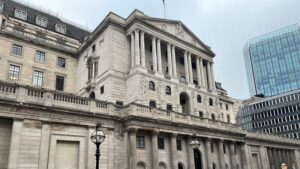Whereas aggregate demand has increased substantially in recent years – predominantly boosted by an increase in government-sponsored social welfare schemes, subsidies and a rise in compensation for government employees – aggregate investment in capacity creation has remained weak, leading to serious supply-side constraints in many sectors of the economy.
To successfully tackle the structural and cyclical factors playing a part in India’s inflation problem, policymakers have no option but to take a two-pronged approach.
Firstly, contain aggregate demand through monetary and fiscal policy adjustments. Secondly, fix the supply-side issues through more investment in capacity creation, innovation in distribution infrastructure and more economic reform. Both elements require urgent attention, but the payoffs are unlikely to be immediate.
Policy responses to tackle the problem include:
Curtailment of excess demand:
The Reserve Bank of India (RBI) has been the most active central bank in tightening monetary policy post-2008. In addition to tightening domestic liquidity, the RBI effectively raised rates by 425bp since early 2010. Monetary policy in India only impacts the real economy after a lag of about six to nine months, so the sharp rise in policy rates since December 2010 should start taking effect between June and September 2011. This should have a collateral impact on growth rates, with 2011-12 expected to be a sub-potential year of growth. This has, however, some unintended consequences, mainly of discouraging investment demand, which could compound and prolong the inflation problem.
Fiscal Adjustment:
The government has realised the need to rein in fiscal deficit (particularly by controlling expenditure) to tame aggregate demand and control inflation. Thus, it has budgeted expenditure growth of just 3% in nominal terms for 2011-12. This target may be ambitious, but it also makes clear the government’s conviction in improving its financial position in the medium term.
Capacity creation:
The correct long-term response to the supply/demand imbalance for various items of consumption is to increase supply; aggressive monetary tightening would undoubtedly derail growth and hamper investment at a time when it is much needed. A massive impetus is needed from the government to promote private and public investment in agriculture, food supply chain, physical infrastructure for transportation, and the distribution of essential consumption items. We believe many steps in the right direction are likely over the next year or two, since capacity creation is at the core of the inflation issue and will be addressed as a priority.
In summary, a combination of addressing demand-side pressures, as well as over the medium-term, fixing the supply-side pressures, should help normalise the inflation situation in India.
However, it should be noted that global commodity prices remain a variable over which there is little control and will also be critical in determining the inflation trajectory and outlook in India over the next several years.







